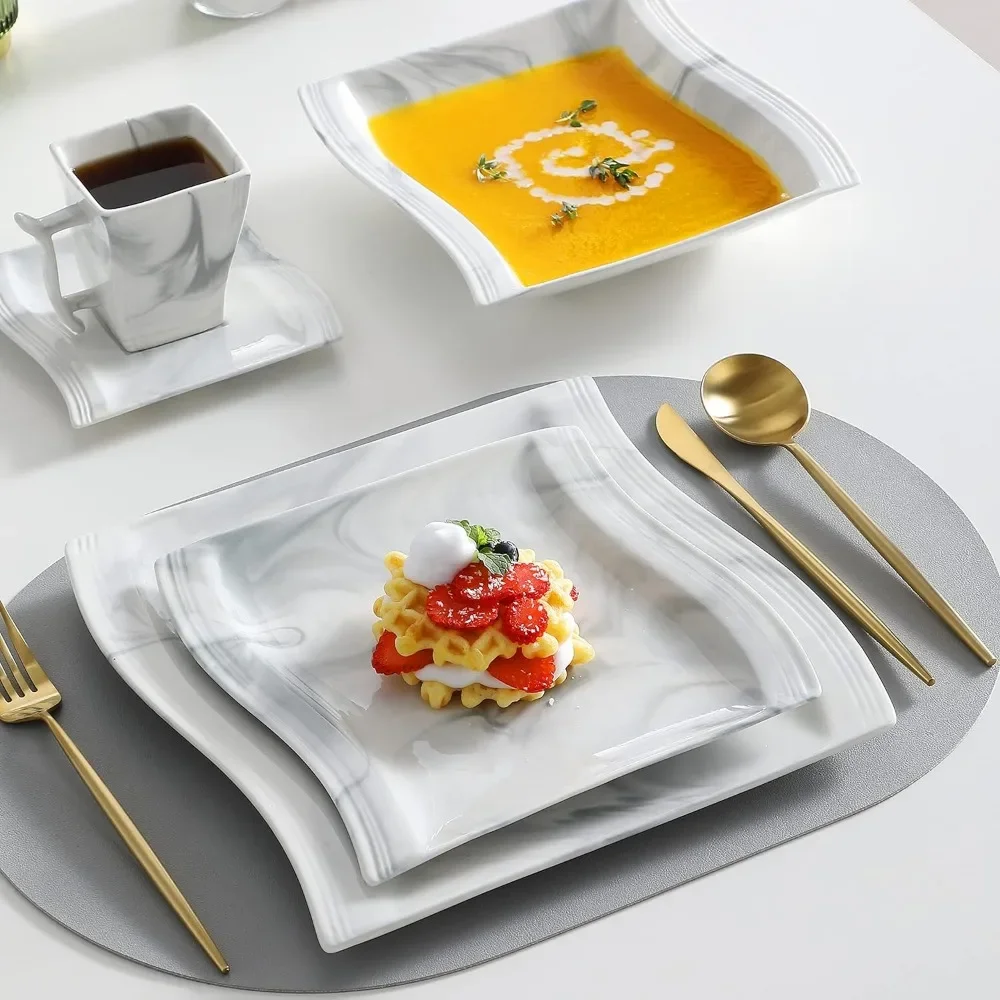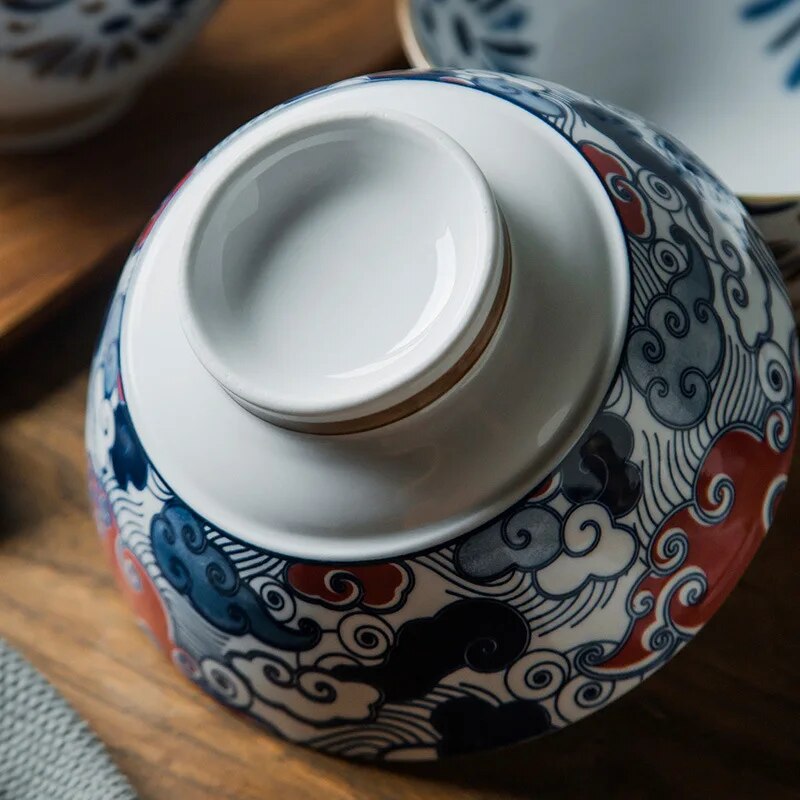
Asian plates offer a rich tapestry of culinary traditions and flavors, reflecting the diverse cultures and histories of the Asian continent. From the intricate designs of Chinese porcelain to the rustic charm of Japanese ceramic ware, Asian plates are as much a part of the dining experience as the food itself.
In this article, we’ll explore the different types of Asian plates, their cultural significance, and tips for selecting and using them to enhance your dining experience.
The Significance of Asian Plates
Asian plates are more than just functional items; they embody cultural heritage, artistry, and tradition. Here’s why they hold such significance:
1. Cultural Heritage
Each type of Asian plate reflects the culinary traditions and artistic expressions of its region. For example, Chinese porcelain plates are renowned for their intricate designs and historical significance, while Japanese ceramic plates often showcase minimalist elegance and craftsmanship.
2. Artistic Expression
Asian plates often feature elaborate designs, including traditional motifs and patterns. These designs can range from delicate floral patterns to bold geometric shapes, each representing different cultural elements and artistic styles.
3. Dining Experience
The choice of plate can enhance the overall dining experience. The right plate complements the presentation of food, adding an element of sophistication and elevating the meal to a sensory experience.
Types of Asian Plates
Asian plates come in various styles, materials, and designs, each offering a unique aesthetic and functional quality. Here’s a look at some popular types:
1. Chinese Porcelain Plates
Chinese porcelain is famous for its beauty and durability. These plates often feature intricate patterns and designs that reflect traditional Chinese art and culture.
- Blue and White Porcelain: Known for its classic blue-and-white designs, this type of porcelain often depicts scenes from nature or mythological motifs.
- Famille Rose Porcelain: Characterized by its vibrant colors and intricate patterns, Famille Rose porcelain is often used for more decorative and formal occasions.
2. Japanese Ceramic Plates
Japanese ceramics are celebrated for their simplicity, elegance, and craftsmanship. These plates often feature minimalist designs and natural textures.
- Raku Ware: Known for its unique glazing process, Raku ware plates often have an organic, handcrafted look.
- Imari Ware: Originating from the Arita region, Imari ware is known for its detailed patterns and bright colors.
3. Korean Stoneware Plates
Korean stoneware plates are made from clay and are valued for their durability and rustic appearance. They often feature simple, earthy designs.
- Buncheong Ware: This type of stoneware is known for its distinctive, textured surfaces and often features simple, natural glazes.
- Celadon Ware: Known for its greenish-blue glaze, Celadon ware plates often have a smooth, elegant finish.
4. Thai and Vietnamese Plates
Thai and Vietnamese plates reflect the vibrant and colorful nature of their respective cuisines. These plates often feature bold designs and bright colors.
- Thai Ceramics: Thai plates often feature intricate patterns and motifs inspired by traditional Thai art and culture.
- Vietnamese Pottery: Known for its vibrant colors and artistic designs, Vietnamese pottery often incorporates traditional patterns and cultural symbols.
5. Indian Plates
Indian plates are diverse and often feature intricate designs and vibrant colors, reflecting the rich cultural heritage of the region.
- Terracotta Plates: Made from natural clay, terracotta plates often have a rustic, earthy appearance and are used for traditional dishes.
- Hand-painted Plates: Indian plates are frequently hand-painted with elaborate designs and patterns, adding a touch of artistry to the dining experience.
Tips for Selecting and Using Asian Plates
Choosing and using Asian plates involves considering both aesthetic and practical factors. Here are some tips to help you select the right plates for your needs:
1. Consider the Occasion
Different types of Asian plates are suited for various occasions. For formal events, opt for intricate and decorative pieces like Chinese porcelain or Japanese ceramic ware. For everyday use, choose durable and functional options like Korean stoneware or terracotta plates.
2. Match Plates to Cuisine
Consider the type of cuisine you’ll be serving when selecting your plates. For example, delicate Japanese sushi may be best presented on minimalist Japanese ceramic plates, while a hearty Korean stew may be served in robust stoneware.
3. Check for Quality
Examine the quality of the plates before purchasing. Look for well-crafted pieces with smooth finishes and detailed designs. High-quality Asian plates should be free from cracks or imperfections.
4. Consider Maintenance
Some Asian plates may require special care. For example, fine porcelain and ceramic plates may need hand washing to preserve their intricate designs, while stoneware and terracotta plates may be more durable and suitable for everyday use.
5. Explore Different Styles
Asian plates come in various styles, so explore different options to find those that best suit your taste and dining needs. Consider mixing and matching different types to create a unique and personalized dining experience.
Using Asian Plates to Enhance Your Dining Experience
Asian plates can elevate your dining experience by adding visual appeal and cultural richness to your meals. Here’s how to make the most of them:
1. Presentation
Use Asian plates to enhance the presentation of your food. The right plate can highlight the colors and textures of your dishes, making them more visually appealing.
2. Cultural Appreciation
Incorporate Asian plates into your meals to celebrate and appreciate diverse culinary traditions. Understanding the cultural significance of the plates adds depth to your dining experience.
3. Themed Dinners
Host themed dinners featuring Asian cuisine and use matching Asian plates to create an authentic dining atmosphere. This adds an extra layer of enjoyment and immersion to your meal.
4. Home Decor
Asian plates can also serve as decorative elements in your home. Display them on shelves, walls, or countertops to add a touch of cultural artistry to your living space.
Conclusion: Embrace the Beauty and Functionality of Asian Plates
Asian plates offer a unique blend of artistry, cultural heritage, and functionality. By exploring the different types and styles, selecting the right plates for your needs, and incorporating them into your dining experience, you can enhance both the aesthetic and practical aspects of your meals.
Embrace the beauty and versatility of Asian plates and enjoy the rich traditions and craftsmanship they bring to your table.





